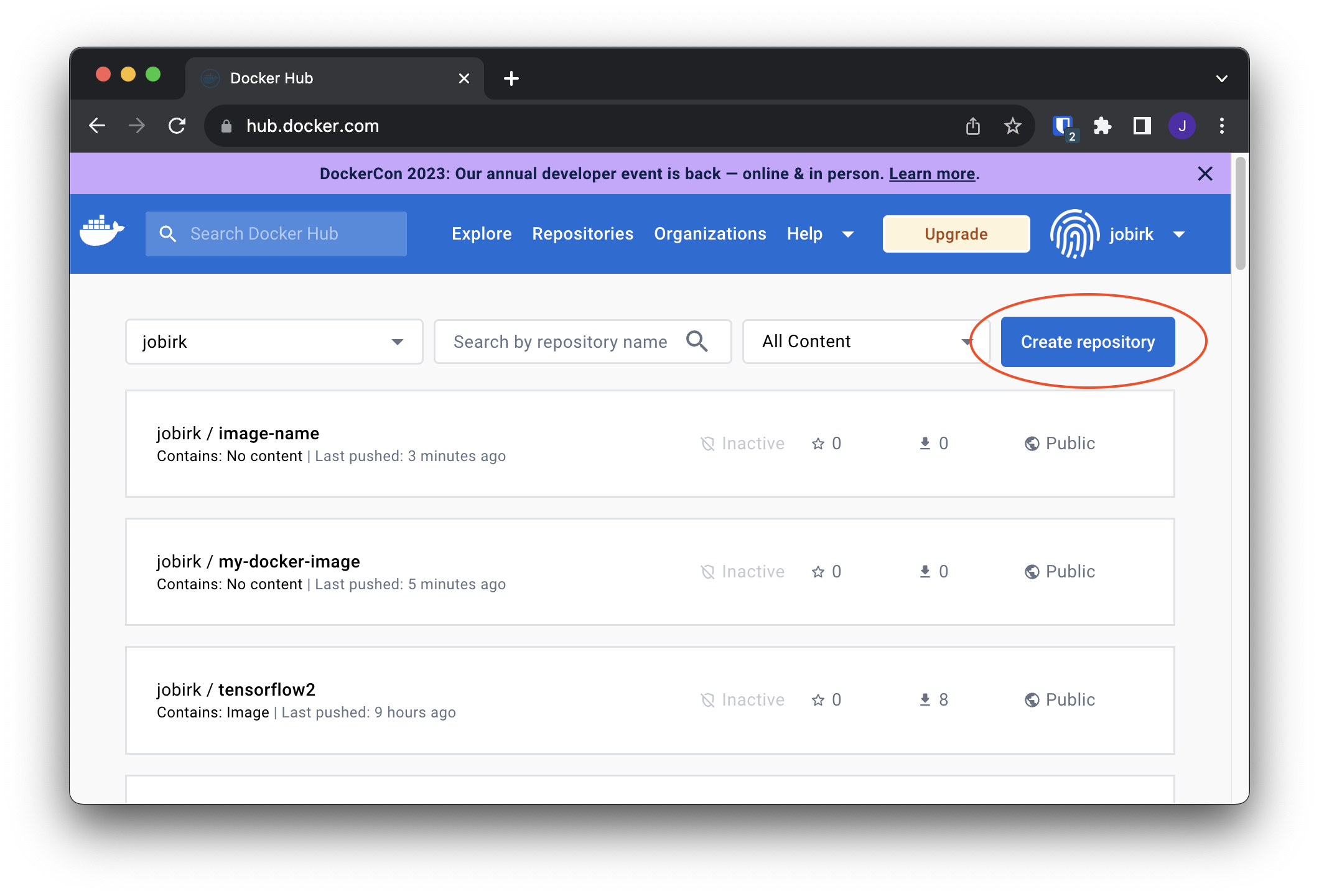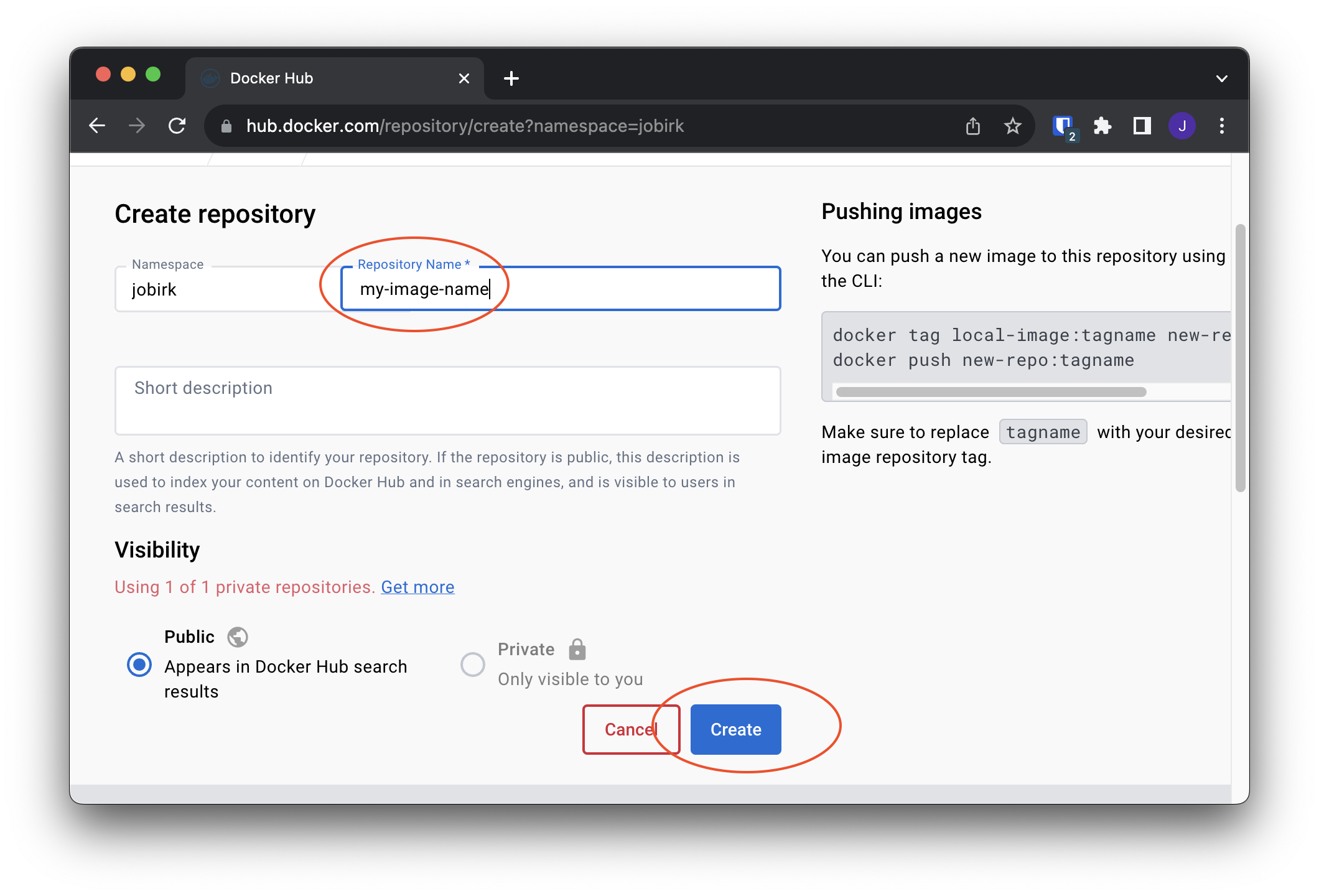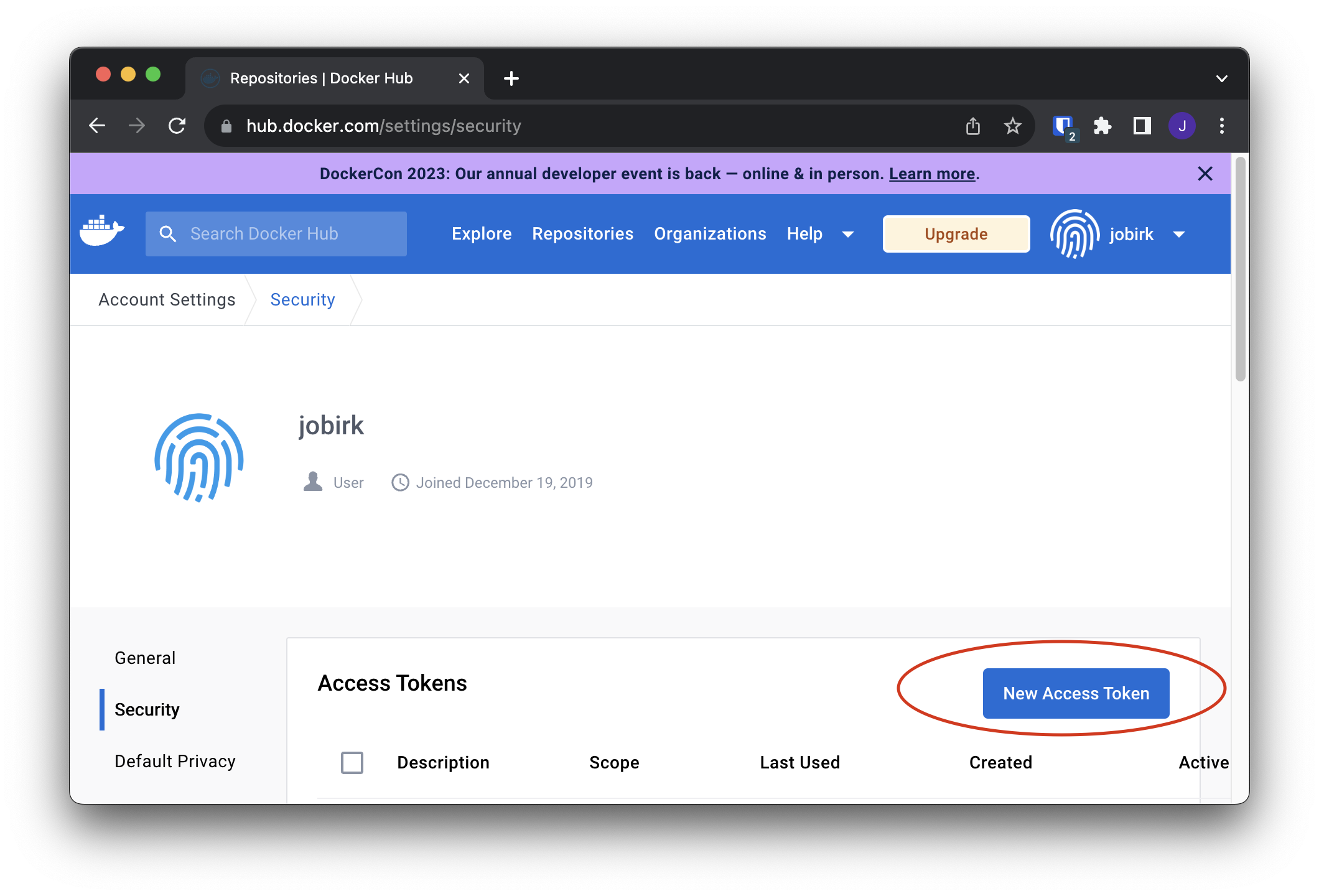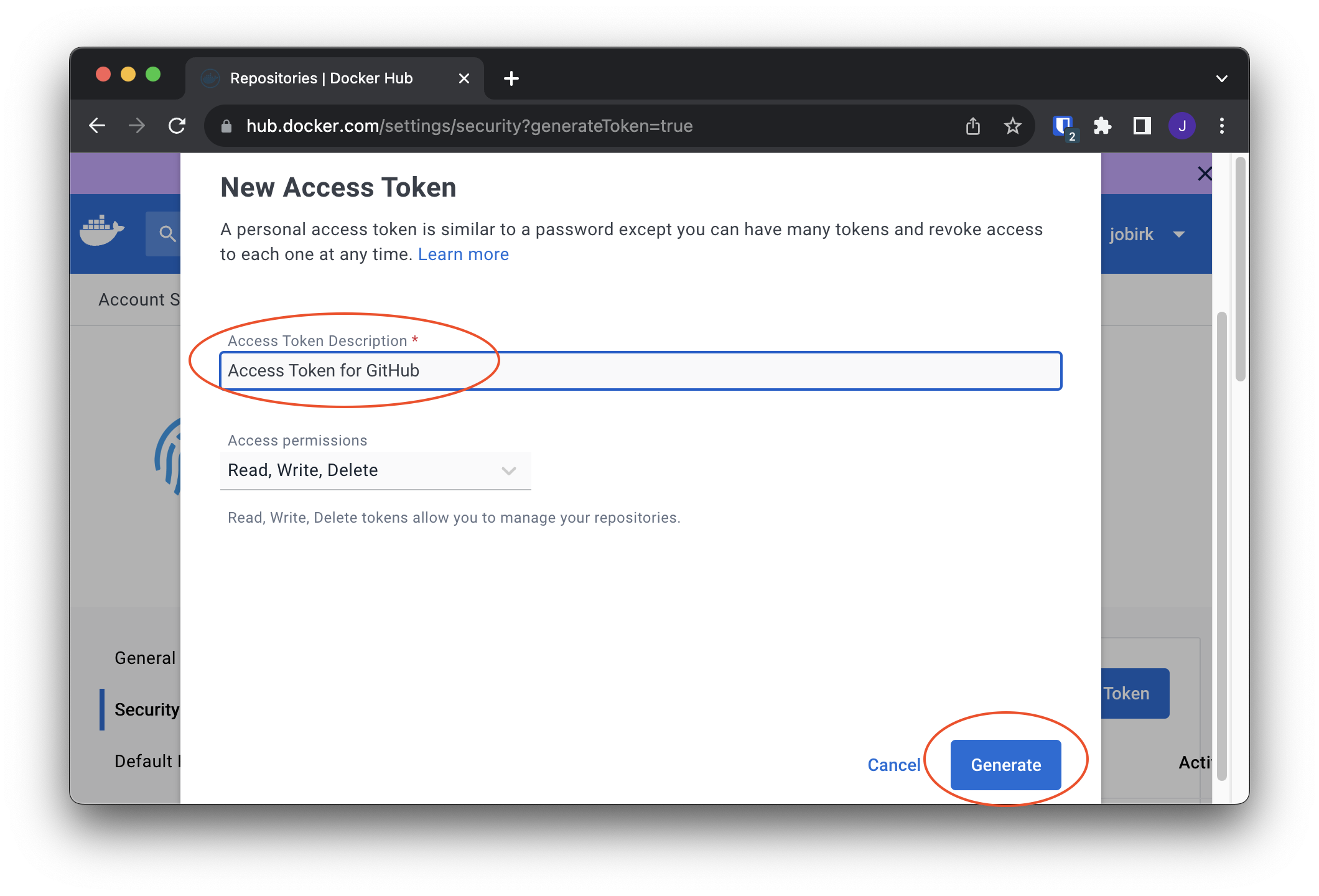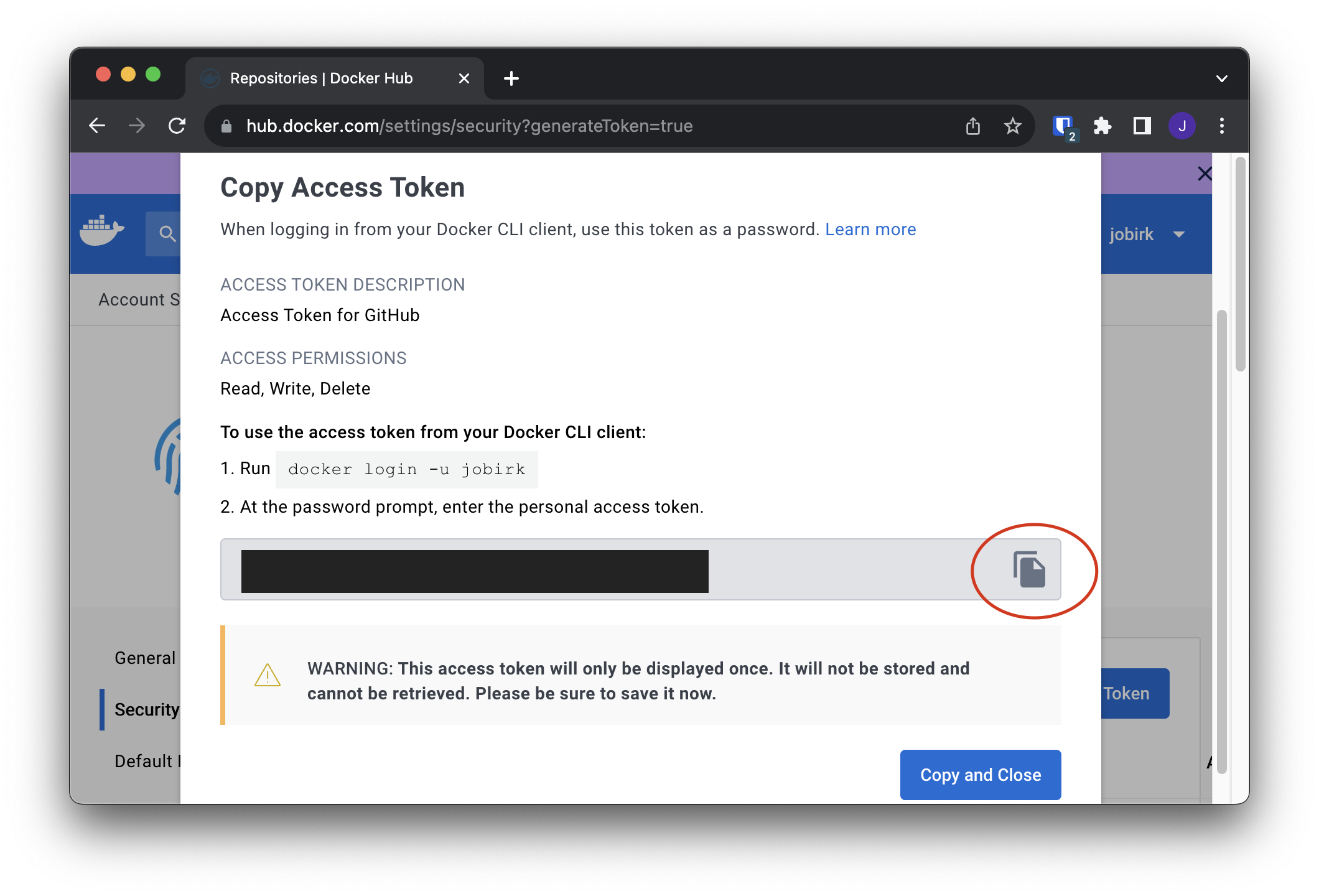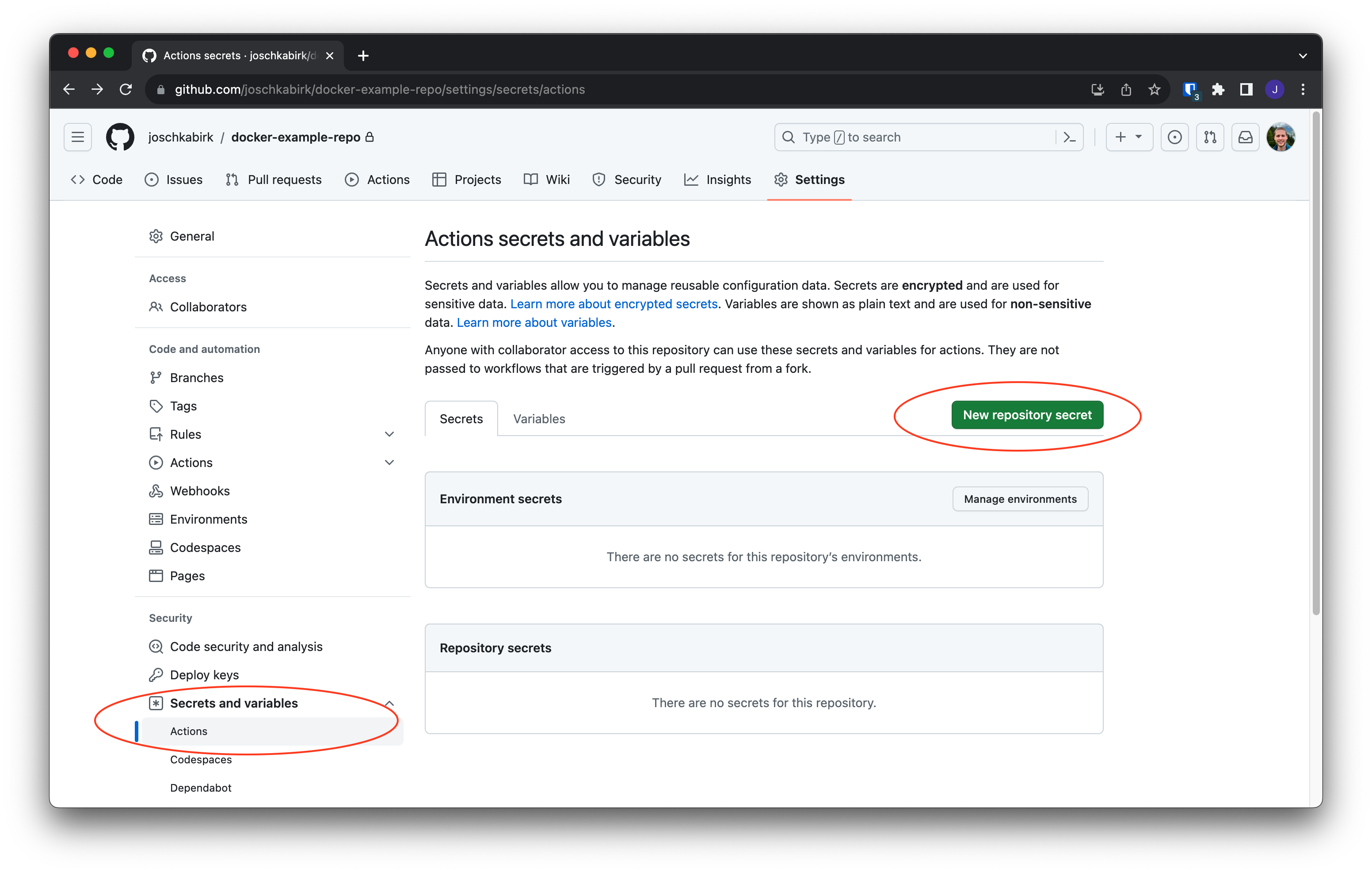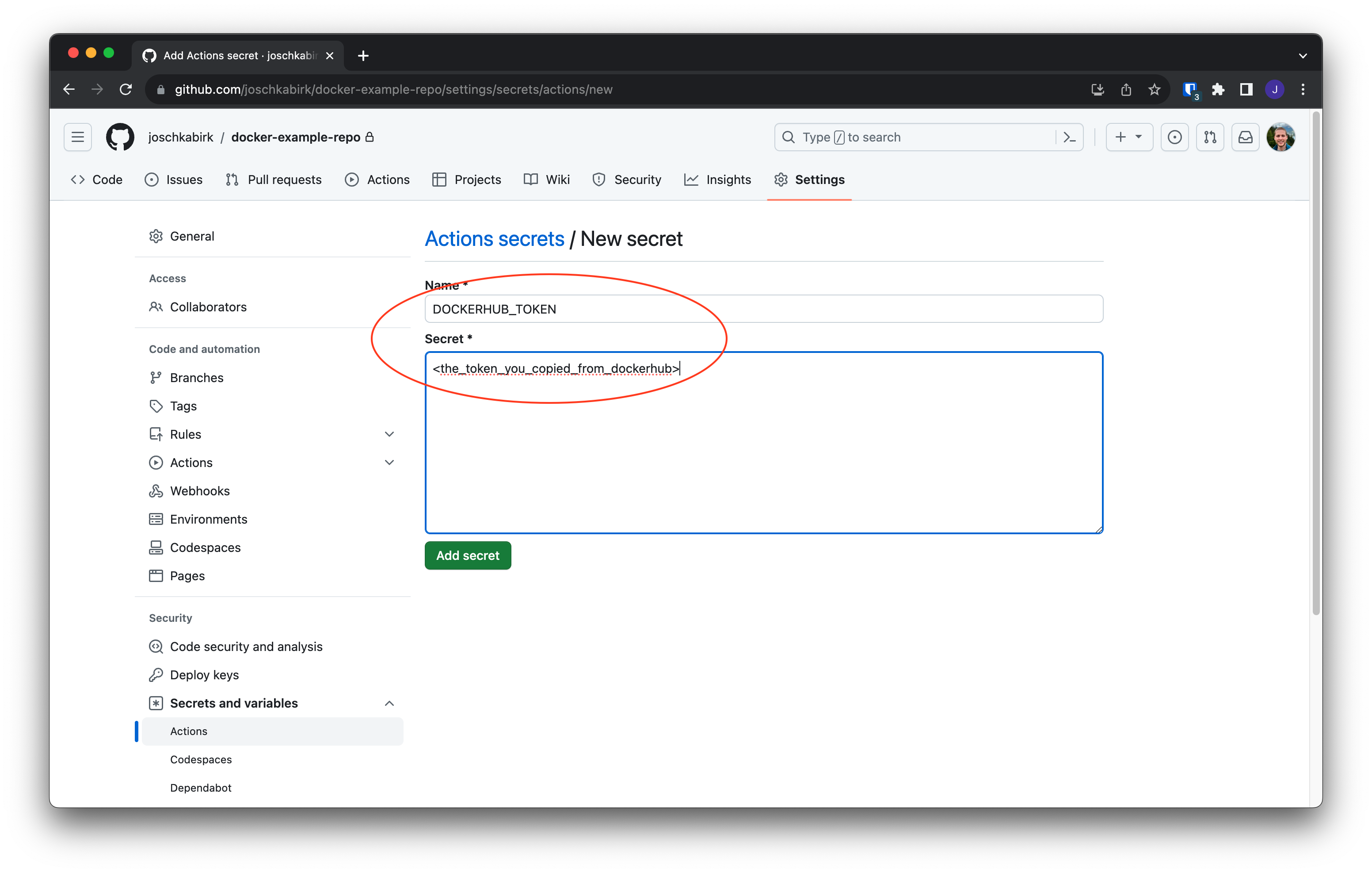This repository is a template for managing a Docker image with automated building and publishing via GitHub Actions.
The README here also contains a guide on getting-started with Docker/Singularity containers on the Uni Hamburg (UHH) Maxwell cluster, which should also be applicable to other HPC clusters.
If you know already what Docker and Singularity are, you can go straight to the Quick-start section.
- Docker images allow users to create isolated and reproducible environments
- Especially the reproducible part is crucial for computing in Science
- Singularity is a container runtime that is installed on most HPC clusters and can run Docker images
- Using docker/singularity containers can be seen as a more robust alternative
to
condaenvironments (if we just talk about creating python environments) - Once set up, singularity allows you and your colleagues to use exactly the same environment - no more "it works on my machine"
- Docker template
Note:
Singularity has been renamed to Apptainer some time ago, but the Maxwell cluster
still uses a version which is called singularity. Just so you won't be confused when
you google stuff about commands etc. at some point.
For running containers on the cluster:
- Access to the cluster
For creating your own containers:
- A GitHub account
- A DockerHub account
Strictly speaking, you don't need a GitHub account to create your own containers, but it is a good idea to use GitHub to version your Dockerfiles and to use GitHub Actions to automatically build and push your images to DockerHub.
- Create a DockerHub repo with the name of your image
- Create a GitHub repo from this template
- Add the DockerHub username, repo and token to the GitHub repo secrets/variables
DOCKERHUB_USERNAME: your DockerHub username (as secret)DOCKERHUB_TOKEN: your DockerHub token (as secret)DOCKERHUB_REPO: the name of your image / repo on DockerHub (as variable)
- Adjust the
Dockerfileanddocker-publish.ymlfiles to your needs
Given that this is a getting-started guide for physicists, who are probably looking for a way to create reproducible environments for their data analysis, you can think of Docker as a way to create reproducible python environments.
If you are familiar with conda, you can think of Docker as a more robust
alternative to conda environments.
There is a nice video on YouTube that explains the basics of Docker in 100 seconds: Docker in 100 seconds.
Singularity is a container runtime that can run Docker containers. Usually, you would use Singularity to run containers on HPC clusters where you don't have root access and can't install Docker.
Singularity reduces the isolation of Docker containers slightly, in terms of which used ID is used within the container and what parts of the host file system you can access. In Singularity, your home directory is mounted into the container by default and the user in the container is the same as the user on the host system. This simplifies the process of running containers on HPC clusters, because you don't have to worry about mounting directories and permissions.
Nice article that briefly compares Docker and Singularity.
This section will guide you through the process of setting everything up for running Docker containers on Maxwell using Singularity.
For this, we assume that you have the name/URL of a docker image that you want to run. Later sections will explain how you can create your own images and can build/version/manage them using GitHub and DockerHub.
In order to avoid running into storage limit problems, we will assign the
singularity cache to a directory in your /beegfs directory (this is
Maxwell-specific).
You can of course also use a different directory if you want, but make sure
that you have enough space there.
First we create a directory where we want to store the cache and the temporary files created by singularity:
mkdir -p /beegfs/desy/user/$USER/.singularity/cache
mkdir -p /beegfs/desy/user/$USER/.singularity/tmpThen we need to tell singularity to use these directories by setting the
environment variables SINGULARITY_CACHEDIR and SINGULARITY_TMPDIR.
Add the following to your .bashrc (or .zshrc if you use zsh):
export SINGULARITY_CACHEDIR=/beegfs/desy/user/$USER/.singularity/cache
export SINGULARITY_TMPDIR=/beegfs/desy/user/$USER/.singularity/tmpWith this setup, you can now run your first container.
For this, we will use the hello-world container from DockerHub.
singularity run docker://hello-worldYou should see the following output:
INFO: Converting OCI blobs to SIF format
INFO: Starting build...
Getting image source signatures
Copying blob 719385e32844 done
Copying config 0dcea989af done
Writing manifest to image destination
Storing signatures
2023/08/30 17:56:13 info unpack layer: sha256:719385e32844401d57ecfd3eacab360bf551a1491c05b85806ed8f1b08d792f6
INFO: Creating SIF file...
WARNING: passwd file doesn't exist in container, not updating
WARNING: group file doesn't exist in container, not updating
Hello from Docker!
This message shows that your installation appears to be working correctly.
To generate this message, Docker took the following steps:
1. The Docker client contacted the Docker daemon.
2. The Docker daemon pulled the "hello-world" image from the Docker Hub.
(amd64)
3. The Docker daemon created a new container from that image which runs the
executable that produces the output you are currently reading.
4. The Docker daemon streamed that output to the Docker client, which sent it
to your terminal.
To try something more ambitious, you can run an Ubuntu container with:
$ docker run -it ubuntu bash
Share images, automate workflows, and more with a free Docker ID:
https://hub.docker.com/
For more examples and ideas, visit:
https://docs.docker.com/get-started/What happened here?
When you executed the singularity run command, Singularity first downloaded
the Docker image from DockerHub and then converted it to a Singularity image
(.sif file).
After that, it executed the image and streamed the output to your terminal.
The output Hello from Docker! and the lines after that are the output of
the hello-world container.
This section will guide you through the process of creating your own images and how to version them using GitHub and DockerHub.
Versioning your images is very useful, because it allows you to go back to previous versions of your image if you run into problems with the current version.
The main idea of this setup is that you have a GitHub repository that contains your Dockerfile and a GitHub Action that automatically builds and pushes your image to DockerHub whenever you push a new commit to the repository.
For commits on the main branch the image will be pushed to DockerHub with
the tag latest.
For tagged commits, the image will be also pushed to DockerHub with the tag
<tagname>.
First, create a DockerHub repository.
You can do this by clicking on the Create Repository button on the DockerHub
website.
Choose a name for your repository and add a description if you want.
Then click on Create.
Afterwards, you need to create a personal access token.
You can do this by clicking on your profile picture in the top right corner
and then clicking on Account Settings.
Then click on Security in the left sidebar and then on New Access Token.
Choose a name for your token and click on Generate.
Copy the token and store it somewhere safe (you won't be able to see it again after you close the window).
You can use this repository as a template for your own repository.
Click on the Use this template button on the GitHub website.
Now you need to add the DockerHub API key, username and repository name
to the GitHub repository secrets / variables.
Go to the repository settings and click on Secrets in the left sidebar.
Then click on New repository secret.
Add the following secrets:
DOCKERHUB_USERNAME: your DockerHub usernameDOCKERHUB_TOKEN: the token you created in the previous section (shown in the screenshot below)
Afterwards, click on "Variables" and add the following variable:
DOCKERHUB_REPO: the name of your image / repo on DockerHub
There are two files in this repository that are important for building and pushing your image to DockerHub:
Dockerfile.github/workflows/docker-publish.yml
The Dockerfile is the file that contains the instructions for building your
image (check out the Docker in 100 seconds
video linked above for a quick introduction to Dockerfiles).
Content of the Dockerfile:
FROM python:3.11
RUN pip install numpyThis Dockerfile will create an image based on the python:3.11 image and
install numpy in it.
This will then create the environment that you can use for your data analysis,
send it to your colleagues etc.
The docker-publish.yml file contains the GitHub Action that builds and pushes
your image to DockerHub.
GitHub Actions allows you to automate certain tasks on GitHub, like building
and pushing your Docker image in our case.
Check out the video CI/CD in 100 seconds
for a quick introduction to CI/CD (we just use the automation part here, there
is no testing involved).
The GitHub Action that we set up in the previous section will automatically
build and push your image to DockerHub whenever you push a new commit to the
repository.
However, it will always push the image with the tag latest.
If you want to version your images, you can do this by creating a new tag
for your commit.
You can do this by clicking on the Releases tab in your repository and then
on Create a new release.
Now that you have your image on DockerHub, you can pull it to Maxwell and run it with singularity.
singularity run docker://<username>/<repo>:<tag>I.e. if your username is johndoe, your repo is myimage and your tag is
v1.0, you would run:
singularity run docker://johndoe/myimage:v1.0The first time you run this command, singularity will download the image from DockerHub and convert it to a singularity image. Afterwards, it will execute the image and stream the output to your terminal.
The conversion can take quite some time once your image gets larger.
You can also specify a name of the singularity image file, which allows you
to even share that file with colleagues (they just need read permission for that
file).
singularity build docker://<username>/<repo>:<tag> <path>/<to>/<image>/<file>.sifYou can also use singularity containers for remote development in VSCode.
To set up everything, install the remote development extension pack in VSCode.
If you want to use this image for remote development with VSCode, you need to
install either curl or wget in the image, because the VSCode server
installation script uses one of these tools to download the server files.
Add the following line to your Dockerfile:
RUN apt-get update && apt-get install -y curl wgetAdd the following to your .ssh/config file:
Host singularity_image~*
RemoteCommand export SINGULARITY_CACHEDIR=/beegfs/desy/user/<username>/.singularity/cache && export SINGULARITY_TMPDIR=/beegfs/desy/user/<username>/.singularity/tmp && singularity shell --nv -B /beegfs/desy/user path/to/image.sif
RequestTTY yes
Host max-wgs-sing singularity_image~max-wgs-sing
HostName max-wgs.desy.de
User <username>
Add the following to your VSCode settings (you can open the settings.json file
via the VSCode command palette with Ctrl+Shift+P and then typing
Preferences: Open User Settings (JSON)):
"remote.SSH.serverInstallPath": {
"singularity_image~max-wgse-sing": "/beegfs/desy/user/<username>/.vscode-container/<container-name>",
},
"remote.SSH.enableRemoteCommand": true,This will enable the remote command feature in VSCode, which allows you to run the singularity container on the remote machine and then connect to it.
It will also set the path to where you want to store the VSCode container files on the remote machine (specifying this path is recommended, especially if you are working with multiple containers on the same machine, because otherwise the VSCode server files will be stored in the home directory, and you will have to delete them manually if you want to switch to a different container).
Also create the directory on the remote machine:
mkdir -p /beegfs/desy/user/<username>/.vscode-container/<container-name>
